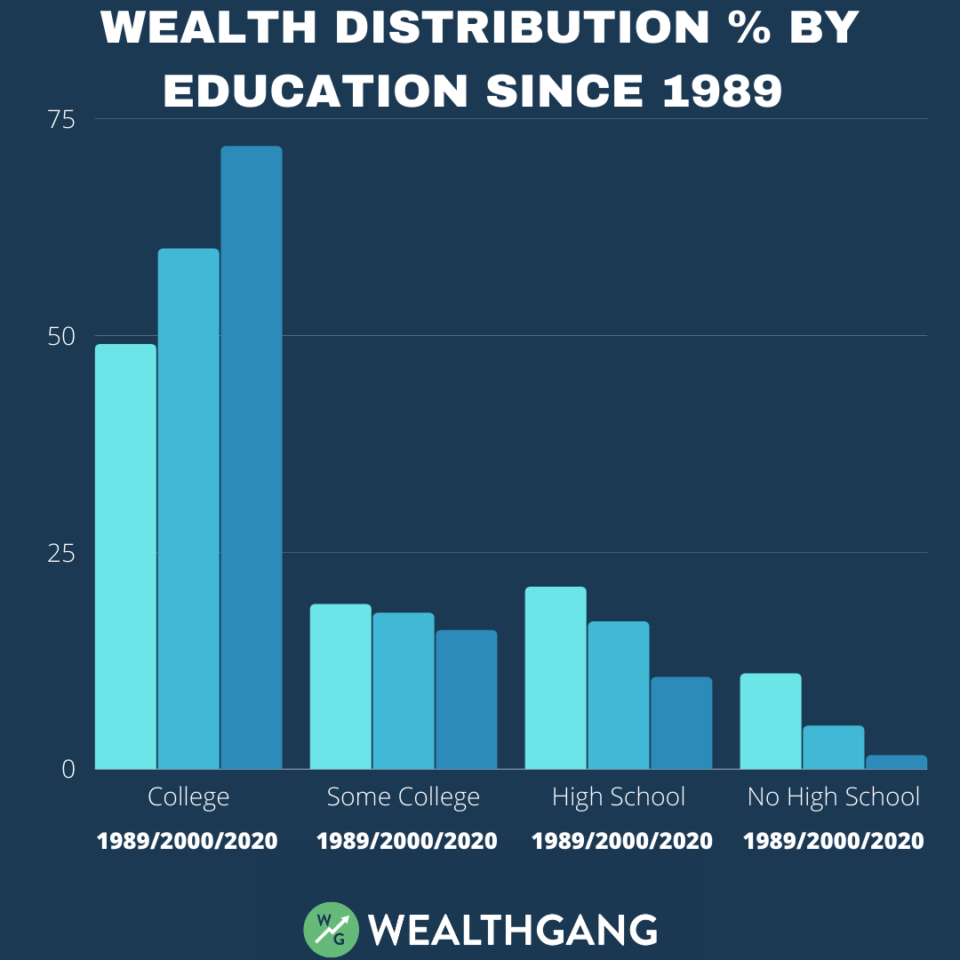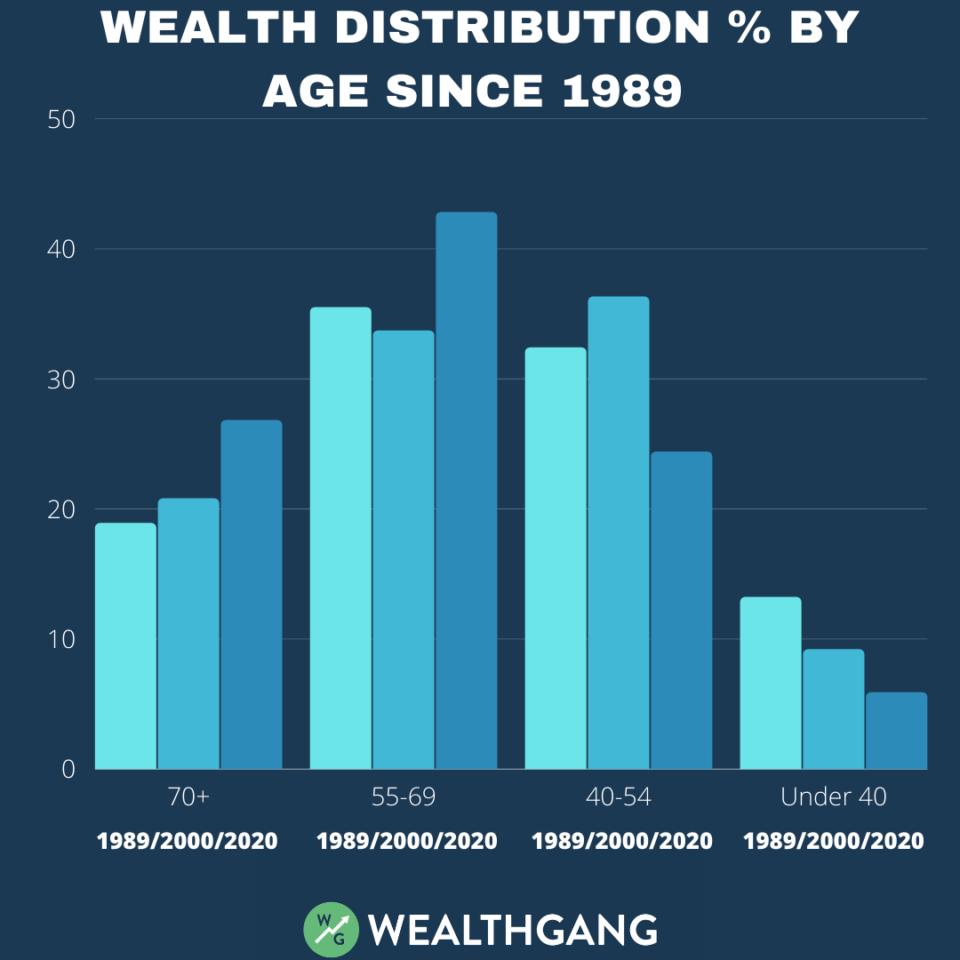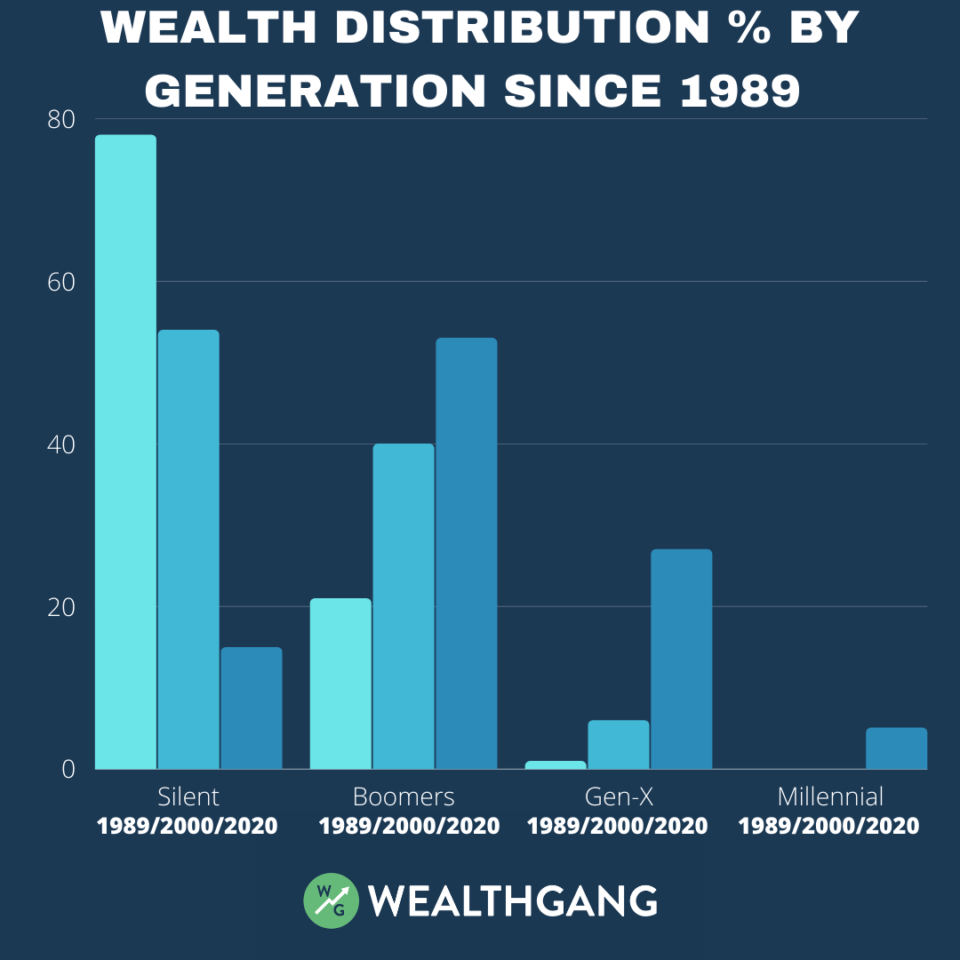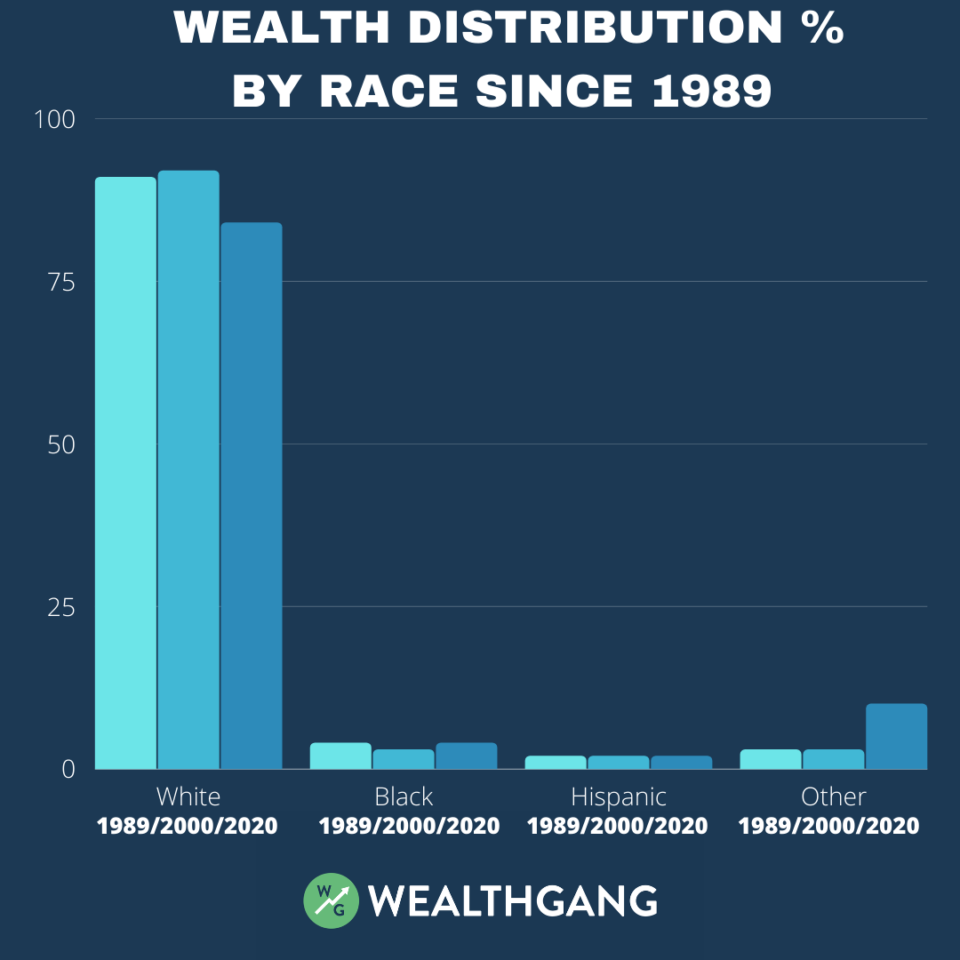Wealth Distribution In The U.S. Since 1989 By Race, Age, Education And Generation

We’re not sure how long the Federal Reserve has been tracking wealth distribution data, but we took a look back to the earliest year they have on their website: 1989. Ah yes, 1989, the year Taylor Swift was born. Back then, George H.W. Bush was president, Game Boy came out, The Simpson’s made its debut and wealth distribution in the U.S. was heavily owned by White Americans in their 50s and 60s.
A lot of those things have changed, but wealth distribution has not evolved a whole lot. You might even argue that things have gotten worse. Especially for some groups of Americans.
Below, we took some of the data from the Federal Reserve website and put it into easily digested graphs for you. We decided to showcase the breakdown of wealth distribution for 1989, 2000 and 2024. We also did it by Education, Age, Generation and Race. If you look closely, you’ll see some glaring short comings in the evolution of American wealth.
Wealth Distribution In The U.S. By Education

In the 80s, 90s and early 2000s, there was an emphasis and an expectation for young adults to get a college education. However, it wouldn’t be surprising if there is a shift in this data over the next two decades.
Why is that? Simple. We are in the middle of a workforce revolution. Not only do a lot of millennials regret that they took on crippling student debt, younger people are finding more innovative ways to earn a living in the digital economy. If you work on the Internet, what you can do is oftentimes more important than where you went to college. On top of that, information and education is widely available for anyone who wants to learn.
Wealth Distribution In The U.S. By Age

What is happening to people 40 and under? Why are they falling behind when all of the other age brackets owned a much bigger portion of wealth at the same age? The next graph shows more of this.
Wealth Distribution In The U.S. By Generation

Millennials and Gen Z only occupy 5% of the wealth in the U.S. How can that be? The answer might have something to do with all that student loan debt we talked about earlier. Or, it’s possible that the fact that they only own 2% of all equities and mutual funds is causing them to fall behind.
Last, but definitely not least, is a chart that shows the glaring income inequality between races in this country.
Wealth Distribution In The U.S. By Race

Has some progress been made? Sort of. For hispanic and black Americans, their share of wealth has remained virtually unchanged since 1989. Races that fall under the Federal Reserve’s “other” category have, however, managed to pull some of the wealth from white Americans.
There you have it. How do you solve all the wealth inequality in the U.S.? That is a loaded question. Some of the wealth disparity by age will be solved over time and through money being passed down from inheritances. What is much harder to solve is wealth distribution by race. Clearly we’ve made almost no progress in 30 years. We hope sites like ours can help make a lot more progress over the next 30.